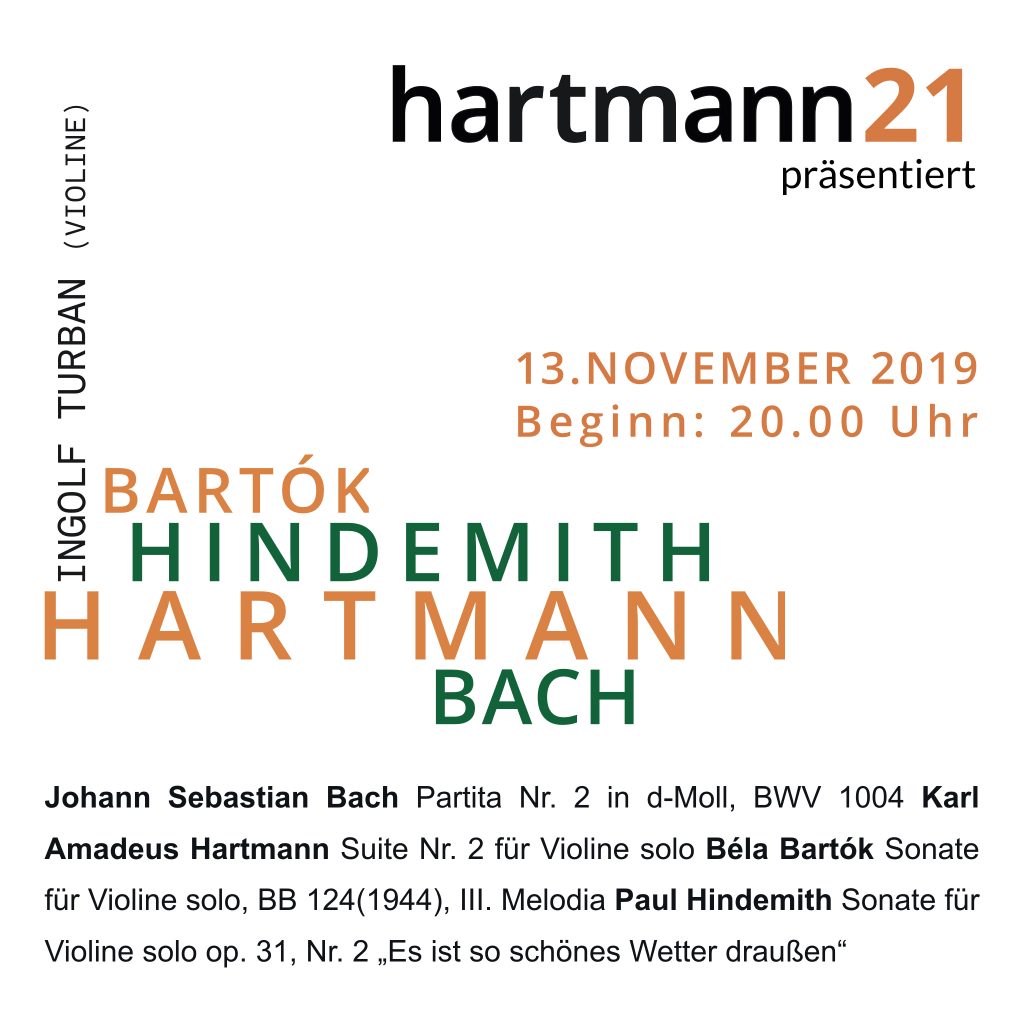With the violinist Ingolf Turban, one of the most outstanding and exciting musicians encounters the work of Karl Amadeus Hartmann, exposes himself to it, reflects, traces references and – as an interpreter – lets the listener participate in his individual world of experience. In a singularly composed program, Turban creates a kaleidoscope of different perspectives and modes of perception, allowing one to experience Hartmann’s musically progressive Second suite for violin solo in a new way.
In National Socialist Germany, Hartmann rigorously refused to be appropriated by the totalitarian regime and retreated into “inner emigration”, while at the same time he tried to speak all the more eloquently abroad and was also perceived as a symbol of a “different Germany” – which set culture and humanism against barbarism. He consciously understood his composition as a “Gegenaktion” [“counteraction”]. In each of his works, Hartmann sought international solidarity with allies in spirit, be it through the use of texts and melodies of forbidden artists or with the help of Jewish songs. Especially the use of the Jewish “Eliyahu hanavi” in all compositions of the years 1933 to 1945 became Hartmann’s lament for the extermination of the Jewish people, but also stood for the persecution of all opponents of the regime. The first traces of Jewish melismas can be found in his early work as early as 1927 and lead to the first expressions in Hartmann’s Second suite for solo violin.
“After Bach and Reger, it is probably only Hartmann who succeeded in giving the violin such an unusually complex polyphony. This is all the more astonishing when one considers that Hartmann, as a trombone student of only 22 years of age at the time, was able to fathom the possibilities of the violin so brilliantly to the limits of what was possible,” said Ingolf Turban in an interview in 2013 (Festschrift for the international “Karl Amadeus Hartmann Year 2013”).
It is therefore only logical that our concert will cover a wide range from Johann Sebastian Bach’s Partita No. 2 to Béla Bartók’s Melodia and Paul Hindemith’s Sonata for solo violin op. 31, No. 2. Paul Hindemith, too, still needs to be comprehended far more pluralistically and celebrated for his occasionally even humorous variety of colours.
An event of the © Karl Amadeus Hartmann-Gesellschaft e. V., sponsored by Bayerisches Staatsministerium für Wissenschaft und Kunst, Kulturreferat der Landeshauptstadt München und Bezirk Oberbayern.
